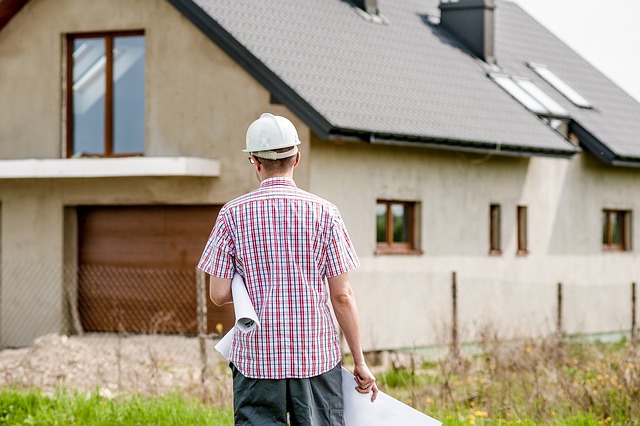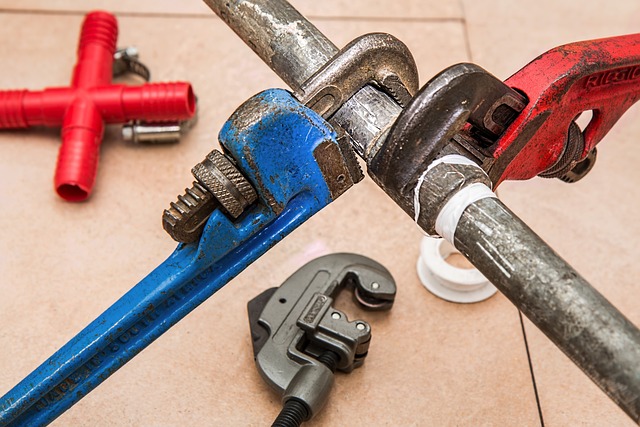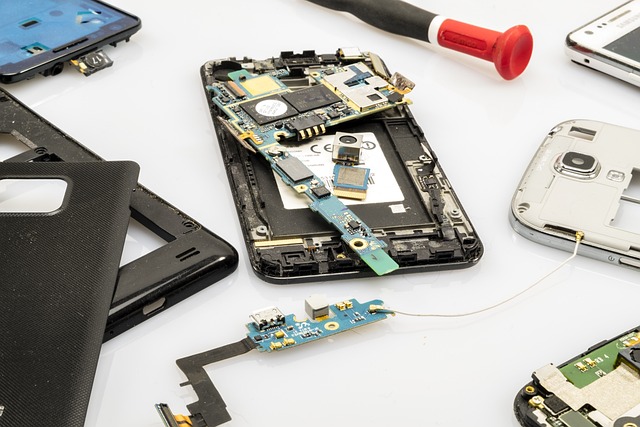Regular upkeep of household appliances is critical for their longevity and performance within home repair and maintenance. This involves scheduling routine checks to detect issues early, thus preventing costly repairs and avoiding unexpected failures. Key tasks include cleaning refrigerator coils, inspecting washing machine hoses, and ensuring energy efficiency and safety. A strategic investment in regular maintenance—documenting all activities and reviewing warranties—supports a well-maintained home. When installing new appliances, it's crucial to follow manufacturer instructions precisely, including proper measurements, electrical connections, and adherence to safety protocols. For those who lack confidence in their DIY abilities, professional assistance is recommended. Regular troubleshooting for malfunctions, such as power supply problems or clogged filters, can prevent minor issues from escalating into major problems. Adopting a proactive approach to maintenance and repair, as outlined in appliance manuals, helps ensure the efficiency and longevity of home appliances. Professional expertise is often necessary for complex repairs and for ensuring safe installation that doesn't invalidate warranties. Essential tools like multimeters, insulation pens, and a comprehensive toolkit are necessary for DIY repairs, along with appropriate safety gear. Always prioritize safety and adhere to manufacturer guidelines, recognizing when professional help is needed for complex tasks within the realm of home repair and maintenance.
Effective home repair and maintenance hinges on a comprehensive approach to appliance care. This article delves into the critical aspects of maintaining, installing, and repairing major home appliances. We’ll guide you through understanding the significance of regular upkeep, provide a detailed walkthrough for safe appliance installation, tackle frequent appliance malfunctions with practical solutions, and highlight the indispensable role of professional technicians in ensuring your appliances function optimally. Additionally, we’ll outline the necessary tools and safety measures for do-it-yourself enthusiasts, share insights on prolonging your appliances’ lifespan, and identify when it’s time to repair or replace them. Cost-effective strategies for routine maintenance and minor fixes, the benefits of energy-efficient models, and compliance with legal and safety standards are also covered to ensure your home remains a safe and efficient space.
- Understanding the Importance of Regular Appliance Maintenance for Homeowners
- Step-by-Step Guide to Safely Installing Major Home Appliances
- Troubleshooting Common Issues in Home Appliances and Efficient Solutions
- The Role of Professional Technicians in Appliance Repair and Installation
- Essential Tools and Safety Gear for DIY Appliance Maintenance and Repairs
Understanding the Importance of Regular Appliance Maintenance for Homeowners

Regular appliance maintenance is a cornerstone in the upkeep of a well-functioning home, directly contributing to home repair and maintenance efficiency. Homeowners who prioritize routine checks on their appliances can significantly extend their lifespan and performance. By ensuring that each unit, from refrigerators to washing machines, operates smoothly, potential issues are often caught before they escalate into costly repairs. This proactive approach not only saves money but also prevents the inconvenience associated with unexpected breakdowns. For instance, cleaning the coils of a refrigerator can maintain its energy efficiency and reliability. Similarly, inspecting and replacing washing machine hoses can prevent water damage from leaks. Engaging in regular maintenance is thus an investment in the longevity and functionality of one’s appliances, reducing the need for frequent home repair interventions. It’s a best practice that aligns with responsible homeownership and contributes to a safer and more comfortable living environment. Homeowners should schedule annual inspections and cleanings, keep records of maintenance activities, and be aware of warranty terms to ensure their appliances receive the care they need throughout their service life.
Step-by-Step Guide to Safely Installing Major Home Appliances

When installing major home appliances, safety and precision are paramount to ensure optimal performance and prevent potential hazards. Before beginning the installation process, it’s crucial to carefully read and understand the manufacturer’s manual for specific instructions tailored to your particular model. This step is integral as it outlines the required measurements and connections for the appliance, ensuring compliance with electrical standards and spatial requirements within your home.
Proper preparation includes verifying that you have the necessary tools and materials, such as a level, screwdrivers, wrench, and safety equipment like gloves and eye protection. Measure the designated space to confirm the appliance fits without obstructing walkways or exits. Once positioned, ensure the surface is stable and can support the weight of the appliance. For electrical connections, shut off the power at the main breaker before unplugging or disconnecting any wires to avoid the risk of electric shock. Connect the appliance according to the manual’s electrical diagrams, ensuring secure and tight connections. If you’re not confident in your ability to perform these tasks safely, it is wise to consult a licensed professional for electrical work. After installation, double-check all connections, tighten any loose components, and test the appliance to ensure it operates correctly. Regular maintenance checks should be part of home repair and maintenance routines to prolong the lifespan of your appliances and prevent minor issues from escalating into costly repairs or replacements.
Troubleshooting Common Issues in Home Appliances and Efficient Solutions

When home appliances malfunction, timely troubleshooting and efficient solutions are paramount for maintaining a smoothly functioning household. Common issues such as power supply problems, faulty switches, clogged filters, or defective seals can lead to inefficiencies or complete failure of appliances like refrigerators, dishwashers, and washing machines. For instance, if a refrigerator is not cooling properly, it could be due to a malfunctioning thermostat or a condenser coil that requires cleaning. Homeowners should regularly inspect and clean these components to prevent such issues. Similarly, a dishwasher that fails to drain might have an obstructed filter or a broken pump. Identifying the root cause is essential for implementing the correct fix, thereby saving time and money on repair services. Regular maintenance, including routine checks and prompt repairs, can extend the lifespan of home appliances and ensure they operate at peak efficiency. Home Repair and Maintenance play a critical role in this process, as proactive upkeep can prevent minor issues from escalating into major breakdowns. It’s recommended to refer to the appliance manual for specific troubleshooting steps or to consult with a professional for complex problems. With a strategic approach to home repair and maintenance, households can enjoy the longevity and performance of their appliances.
The Role of Professional Technicians in Appliance Repair and Installation

When household appliances malfunction or cease to function, homeowners are often faced with a choice: attempt repairs themselves or call upon professional technicians for home repair and maintenance services. While DIY solutions can address minor issues, complex faults typically demand specialized knowledge and expertise that only trained professionals possess. These technicians undergo rigorous training to handle various appliance makes and models, ensuring they can effectively diagnose problems, source the correct replacement parts, and carry out repairs that align with safety standards and manufacturer specifications. Their role is pivotal in maintaining the efficiency and longevity of home appliances, from refrigerators to washing machines, dryers, and beyond. Furthermore, professional installation is crucial for guaranteeing that new appliances are set up correctly, reducing the risk of future issues and preventing voided warranties. By entrusting the job to experienced technicians in the field of home repair and maintenance, homeowners can enjoy peace of mind, knowing their appliances are operating at peak performance and that any potential problems are handled with care and precision.
Essential Tools and Safety Gear for DIY Appliance Maintenance and Repairs

When embarking on DIY appliance maintenance and repairs, it’s crucial to have the right tools and safety gear at hand to ensure a job well done and to avoid potential hazards. A multimeter is an indispensable tool for testing voltage, current, and resistance, which is essential for diagnosing issues with electrical appliances. Insulation pens are also valuable for marking live wires, enhancing safety when working on circuits. Additionally, a set of adjustable wrenches, pliers, screwdrivers in various sizes, and a selection of hex keys will cover most bolts and fasteners you’ll encounter in home repair and maintenance. For gas appliances, a gas pressure regulator test gauge is necessary to confirm safe gas pressures.
Personal protective equipment (PPE) is equally important. Safety glasses will protect your eyes from any debris or sparks. Insulated rubber gloves should be worn when handling electrical components or working with power tools to prevent electric shock. A dust mask can safeguard your lungs from airborne particles, and a sturdy step ladder with a non-slip surface will ensure you can reach high appliances without risking a fall. Always remember to read and follow the manufacturer’s instructions for your specific appliance, and if at any point you feel uncomfortable or unsure about a task, it’s best to consult a professional to complete the home repair and maintenance work safely.
Homeowners can maintain the efficiency, longevity, and safety of their appliances through diligent maintenance and informed repair practices. This article has outlined the importance of regular upkeep, provided a comprehensive guide for installing major home appliances, addressed common issues in household devices, emphasized the value of professional expertise for complex repairs, and suggested necessary tools and safety measures for DIY interventions. By following these guidelines, homeowners can ensure their appliances operate optimally, thereby enhancing overall home functionality and maintaining a safe living environment within the realm of home repair and maintenance. Regular attention to these often-overlooked workhorses not only extends their lifespan but also contributes to energy savings and peace of mind.
